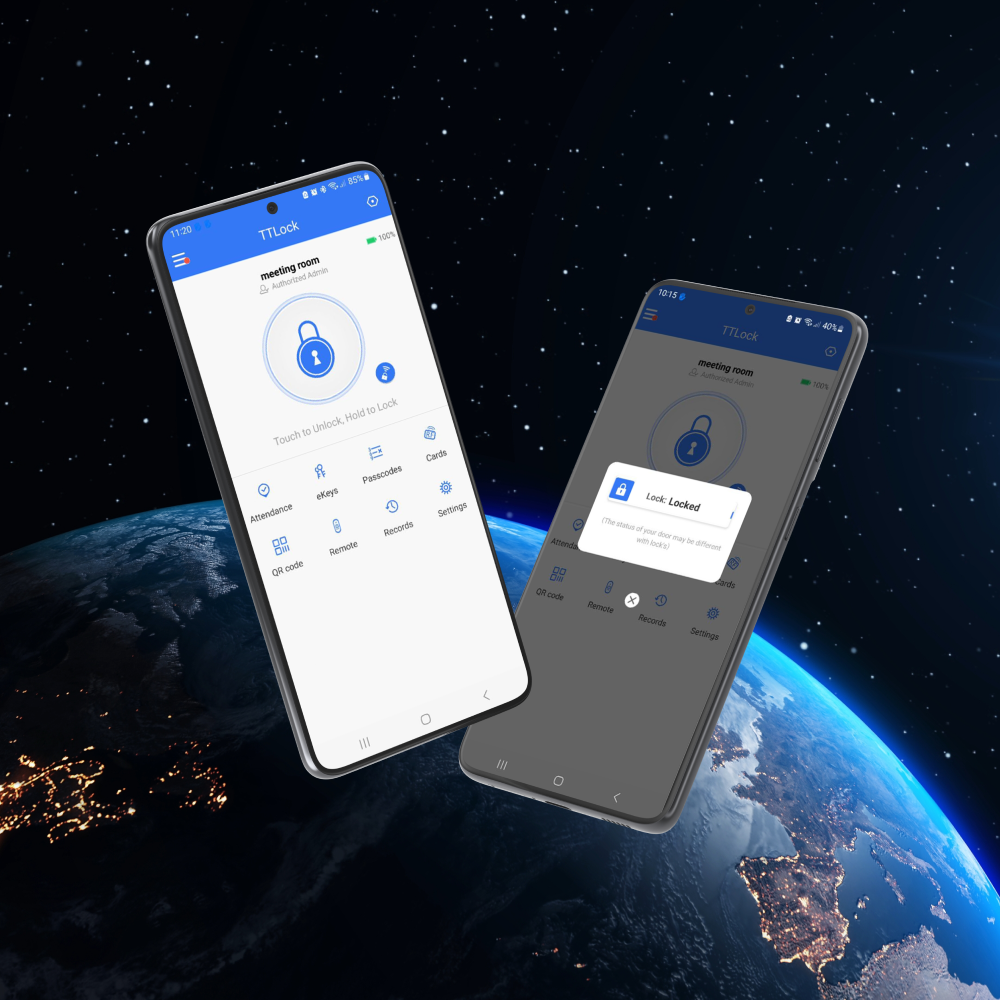Development of transport access control and management systems
Transport access control and management systems
What is ACSTransport access control and management systems What is ACS
Every day, a large flow of transport runs in the territories of warehouses, factories, terminals and other high-security facilities, among which there may be trucks entering for loading and unloading raw materials, cars of employees, customers and others. At the same time, the entire burden associated with the control and registration of vehicles entering the enterprise falls on a limited number of checkpoints.
In such conditions, checkpoints with manual data processing often fail to cope with their tasks, due to which the logistics in the enterprise can be disrupted, and the security of the facilities is correspondingly reduced. Therefore, companies are increasingly giving preference to ACS – automated transport access control and management systems that perform several important tasks at once:
- Vehicles entering and leaving the protected area are automatically registered and the information is stored in the database.
- They fix the exact time of the car’s passage, which is confirmed by a screenshot from the video surveillance camera indicating the vehicle numbers.
- Differentiate access rights for different cars.
- They provide automated control of barrier devices, barriers and traffic lights.
- Instantly and automatically announce the alarm in case of unauthorized passage.
- Use data about employees of the company to track working hours.
- Provide weight and size control of transport.
Thanks to automation, the throughput of checkpoints is significantly increased and, at the same time, errors on the part of personnel due to the human factor, as well as their negative impact on processes, are eliminated.

The principle of operation of ACS
The principle of operation of ACS
The vehicle access control and management system captures a vehicle approaching the checkpoint using a video camera and sends the data to the server, where the vehicle is identified and its number is checked against the database. If information about the car is found and it has the right to enter the territory of the facility, a signal is automatically given to open the barrier and the fact of the entry of the vehicle is recorded.
If the vehicle data was not found on the server, an alarm event is automatically created, and its entry into the territory of the enterprise is prohibited. At the same time, the operator can carry out a manual check of the car and ensure the passage in manual mode, if necessary, as well as enter information about it into the database.
In addition, in the process of implementing the ACS system, there is the possibility of additional verification of vehicles in appearance. In this case, the picture of the vehicle from the video camera will be compared with its photo in the database, which will eliminate the possibility of license plate spoofing.
It is also worth noting that access control systems are developed taking into account the individual needs of each particular company, so their functionality and capabilities may vary.

Technologies for the development of ACS for transport
Technologies for the development of ACS for transport
ACS systems include a whole range of software solutions that function as a single mechanism through the use of a single and centralized database. Therefore, different technologies can be involved in the development of such projects:
- Web applications. The frontend is built using static HTML, CSS, and JavaScript technologies, or reactive technologies like Vue.js and React.js. To develop the backend part, the Python programming languages and its Django / Flask frameworks, PHP and Yii2 / Laravel frameworks, as well as the Node.js platform can be used.
- Desktop applications. Such solutions are installed on a computer or laptop and are characterized by high performance. For their production, PHP and Python are used, as well as their frameworks – Yii2/Laravel and Django/Flask, respectively.
- Mobile applications. The technology stack for mobile projects depends on operating systems: for development on IOS, the native Swift programming language is used, and for Android, Java and Kotlin. At the same time, there are cross-platform technologies, such as the Flutter framework and the Dart language, with which you can implement one application that runs on both operating systems at once.

Development stages
Development stages
The development and launch of access control systems for transport may seem quite complicated, because many things need to be foreseen: what parts the project will consist of, how information about the car will be read and checked, how operators will interact with the interface and what features they need for efficient work.
Large tasks are best solved by breaking them down into small steps, so let’s consider what stages the development of such systems consists of.
Stage 1. Gathering information
Conducting preliminary research is already commonplace when creating any digital product. At this stage, specialists will have to find out how the process of passing transport at the enterprise is built, who controls it and how to automate it as efficiently as possible.
To do this, meetings are held with a representative of the customer and the current IT infrastructure of the company is analyzed.
Stage 2. Development of technical documentation and design
When the data is collected, and the goals and objectives are set, the specialists proceed to the formation of technical documentation. This is a kind of foundation for the project, which describes in detail: the technology stack, functionality, interface structure, the logic of interaction between different constituent elements and the implementation plan.
As a result, we will get a carefully thought-out mockup of the ACS system, which will be used as the basis for all subsequent stages.
Stage 3. Design
For an ACS system, an intuitive interface is no less important than functionality. At least it depends on him how convenient it will be for operators to work with the new software and how much time it will take to train them.
To create a comfortable and logical interface, professional UI designers are involved in the project. They can develop a design completely from scratch, or using existing patterns and templates, which significantly speeds up production.
Stage 4. Creation of the software part
Programming the functionality for the transport access control and management system is the most time-consuming stage, which consists of two parts:
- Frontend – acts as a link between the user and the server. Its main task is to receive requests from the client, pass them to the server, and then output the result. If the front-end is developed using the reactive technologies Vue.js and React.js, it can independently process part of the received data before sending it to the server, which reduces the load on the back-end and, accordingly, improves software performance.
- Backend – this part of the software is located on the server and is responsible for the correct operation of all functionality. At this stage, programmers create databases, describe the logic of functions in the program code, perform integrations with external services and software through APIs or REST APIs, and ensure system security.
Stage 5. Testing
After the technical development is completed, the transport access control system goes through several levels of testing. This allows you to identify most of the possible errors even before the project is put into operation. Main types of testing:
- modular;
- integration;
- functional;
- systemic;
- acceptance.
At the last stage, the compliance of the project with the initial plans and requirements of the customer, as well as its ability to fulfill the tasks assigned to it, is checked.
Stage 6. Support and development
When the testing is completed, the ACS is deployed on the company’s devices, and the staff is trained to work with the new software. However, at this stage, the technical work on the project is still not completed.
The fact is that after the start of using the system in real conditions, users may encounter hidden errors that were not detected at the previous stages and need to be eliminated. In this case, the developers quickly determine the cause of the problem and perform the necessary improvements.
In addition, the first months of using the ACS system often show what functionality is missing and what can be improved to increase its efficiency. Such work is carried out by specialists as part of the development of the project by releasing patches with updates and installing them into a functioning system.
Development of transport access systems in AVADA MEDIA
Development of transport access systems in AVADA MEDIA
The ACS system increases the throughput of the checkpoint and automates most of the processes associated with the control of passing vehicles. With its help, you can organize more efficient logistics, which, accordingly, will lead to an increase in the profitability of the entire business.
Our company has practical experience in the implementation and deployment of access control systems in the territories of various facilities. For the development of such projects, we use already formed teams of specialists with well-established communication, thanks to which we can guarantee the high quality of the software being created.
Fresh works
We create space projectsFresh works
The best confirmation of our qualifications and professionalism are the stories of the success of our clients and the differences in their business before and after working with us.
Our clients
What they say about usOur clients What they say about us
Successful projects are created only by the team
Our teamSuccessful projects
are created only by the team Our team












Contact the experts
Have a question?Contact the experts Have a question?
-
Phone:+ 38 (097) 036 29 32
-
E-mail:info@avada-media.com.ua















